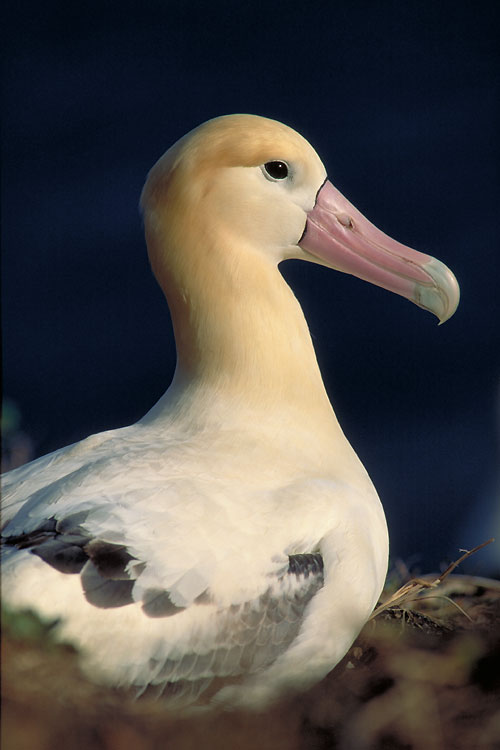Masaki Eda (Hokkaido University Museum, Hokkaido University, Sapporo Hokkaido, Japan) and colleagues have an accepted article published online in the journal Ibis that shows that birds from two populations of Short-tailed Albatrosses Phoebastria albatrus tend to mate assortatively.
The paper's abstract follows:
“Assortative mating is an important pre-mating isolation mechanism that has been observed in some wild populations of seabirds. The Short-tailed Albatross Phoebastria albatrus is a globally Vulnerable seabird that breeds mainly on Torishima and the Senkaku Islands in the north-western Pacific Ocean. Ourtr previous studies suggested that two genetically distinct populations exist, one on Torishima and the other on the Senkaku Islands. Recently, however, several un-ringed birds in subadult plumage have been observed breeding on Torishima in the Hatsunezaki colony. Since almost all birds hatched on Torishima since 1979 have been ringed, the natal site of the un-ringed birds was suspected to be the Senkaku Islands. Genetic differences between the two populations would reveal the natal sites of un-ringed birds. By observing the ring status (ringed or un-ringed) of mating pairs and analysing the mitochondrial DNA (mtDNA) control region 2 of un-ringed birds, we assessed whether birds that originated from Torishima and the Senkaku Islands achieved pre-mating isolation. There was a small number of pairs on Torishima that comprised one ringed and one un-ringed bird, but the observed number was significantly lower than that expected if ringed and un-ringed birds mated randomly. Furthermore, mtDNA analyses of nine un-ringed birds demonstrated that all belonged to a particular haplotype clade from the Senkaku Islands. These results show that birds from Torishima and the Senkaku Islands mate assortatively but that there is incomplete pre-mating isolation between birds from the two island groups. The pre-mating isolation of these two populations of Short-tailed Albatross could arise from differences in the timing of breeding and incompatibility in mating displays. Since the divergence between the two populations is unlikely to be sufficient to achieve complete post-mating isolation, the two groups are likely to be hybridising. Further studies using molecular and/or behavioural analyses would be required to reveal the evolutionary significance of hybridisation between these two populations.”
With thanks to Barry Baker.

Short-tailed Albatross, photograph by Hiroshi Hasegawa
Reference:
Eda, M., Izumi, H., Konno, S., Konno, M.& Sato, F. 2016. Assortative mating in two populations of Short-tailed Albatross Phoebastria albatrus on Torishima. Ibis doi: 10.1111/ibi.12397.
John Cooper, ACAP Information Officer, 18 July 2016

 English
English  Français
Français  Español
Español